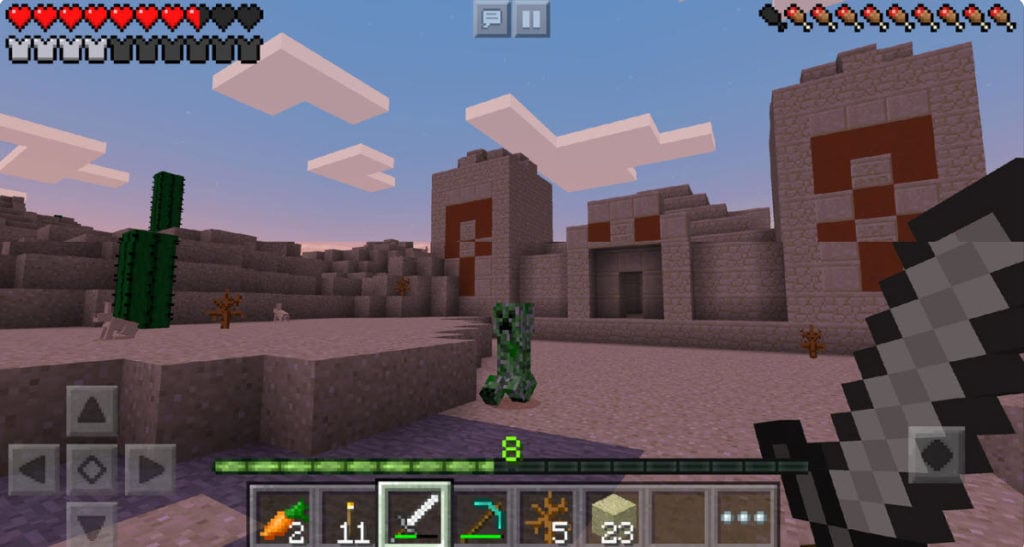While Minecraft is a rather simple game at its core, the fact that it has way too many versions floating around the internet can make it a little bit intimidating for new players to choose one.
In this article, we’re talking about the two official versions of Minecraft — Java and Bedrock and highlighting the differences between the two so you know which one is better for you.
Also read: What does Channeling do in Minecraft?
What do the two versions mean?
Microsoft bought the game from Mojang for about $2.5 billion in 2013. Since then, they’ve made significant changes to the game to make it available to a lot more players. This has led to the game being divided into two.
- Java Edition: This is the original Minecraft that released back in 2009. It’s developed in Java and is not compatible with the current (Bedrock) version of Minecraft. It was renamed to Minecraft: Java Edition after the launch of the Bedrock Edition in 2017.
- Bedrock Edition: This is a complete rewrite of Minecraft in C++, based on Minecraft: Pocket Edition (released in 2011). The game launched on September 20. 2017 and brought nine major device platform under a single codebase called the Bedrock Engine.
What are the differences between the two editions?
While core gameplay might seem similar between the two games (and for the most part, it is), there are quite a few underlying differences.
Gameplay
While the concept is the same between the two games, there are a few differences here. For starters, since the codebase between the two games is entirely different, any third-party mods made for the Java Edition aren’t compatible with the Bedrock Edition. Things like advanced tooltips are also missing from the Bedrock Edition.

If you’re playing the Java Edition, your control choices are pretty much limited to a keyboard and mouse. The Bedrock Edition, on the other hand, lets you play with a controller or a touch-screen device in addition to the traditional control options.
Multiplayer gameplay, however, is much more expansive on the Java edition. Both versions of the game have their servers, but Java servers have been around for quick sometime now, meaning there’s no shortage of content and new minigames.
Compatibility and Cross-play
The Java Edition is PC (Windows, Mac and Linux) only and is pretty limited in its cross-platform playing options. It also requires a much more powerful PC to run smoothly as Minecraft can quickly hog up your system resources.
The Bedrock Edition is available on just about every platform, including the Playstation, Xbox, Nintendo Switch and Smartphones. Also, Bedrock players can play with other players on the same edition regardless of the device. Besides, with the Bedrock engine designed to be played on PC, consoles and mobiles, it offers far better performance on lower-end PCs.
| Platform | Minecraft: Java Edition | Minecraft: Bedrock Edition |
|---|---|---|
| PC | Yes | Yes |
| macOS | Yes | No |
| Linux | Yes | No |
| Chromebook | No | After heavy modding |
| PlayStation | No | Yes |
| Xbox | No | Yes |
| Nintendo Switch | No | Yes |
| iPhone and iPads | No | Yes |
| Android | No | Yes |
| Smart TVs and streaming devices | No | Yes |
Mods and third-party support
While both games get mods and third-party additions, the Java Editions wins out this one with its limitless supply of free to download and easy to use mods. While Bedrock has mods, too, it has a very modern feel, with players having to buy them from the in-game marketplace for the most part.

So which one should you buy?
The answer is quite simple — it depends on what you want to do with the game and how you want to play. If your friends play the Java Edition and want to play with them, you haven’t got a choice. Besides, if you’re playing on anything other than a PC, Bedrock becomes the default option.
On PC, the choice between Bedrock and Java comes down to how much tinkering you want to do and whether or not you have a PC strong enough to run the Java edition.
Also read: Why does Minecraft keep crashing? 6 Fixes






